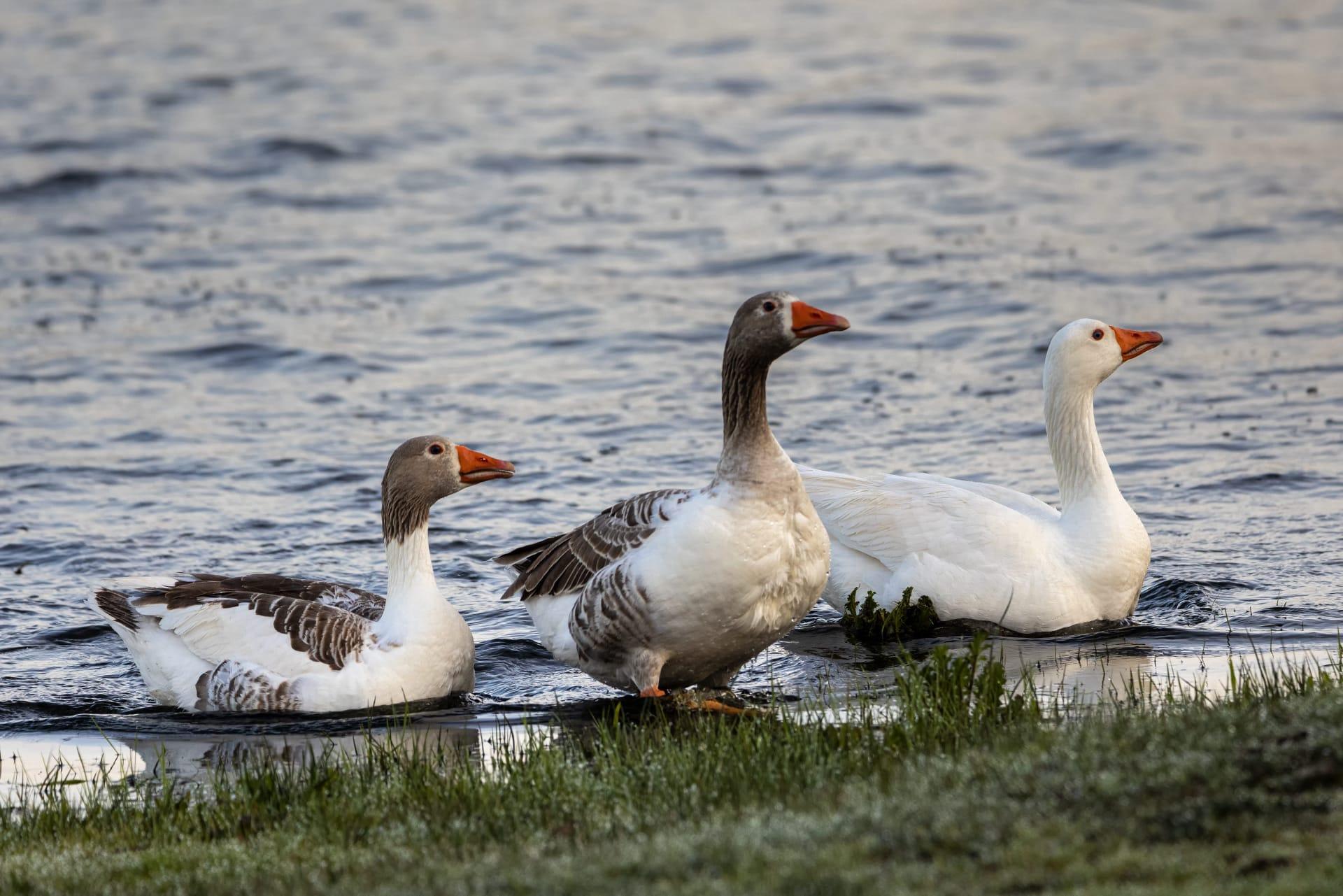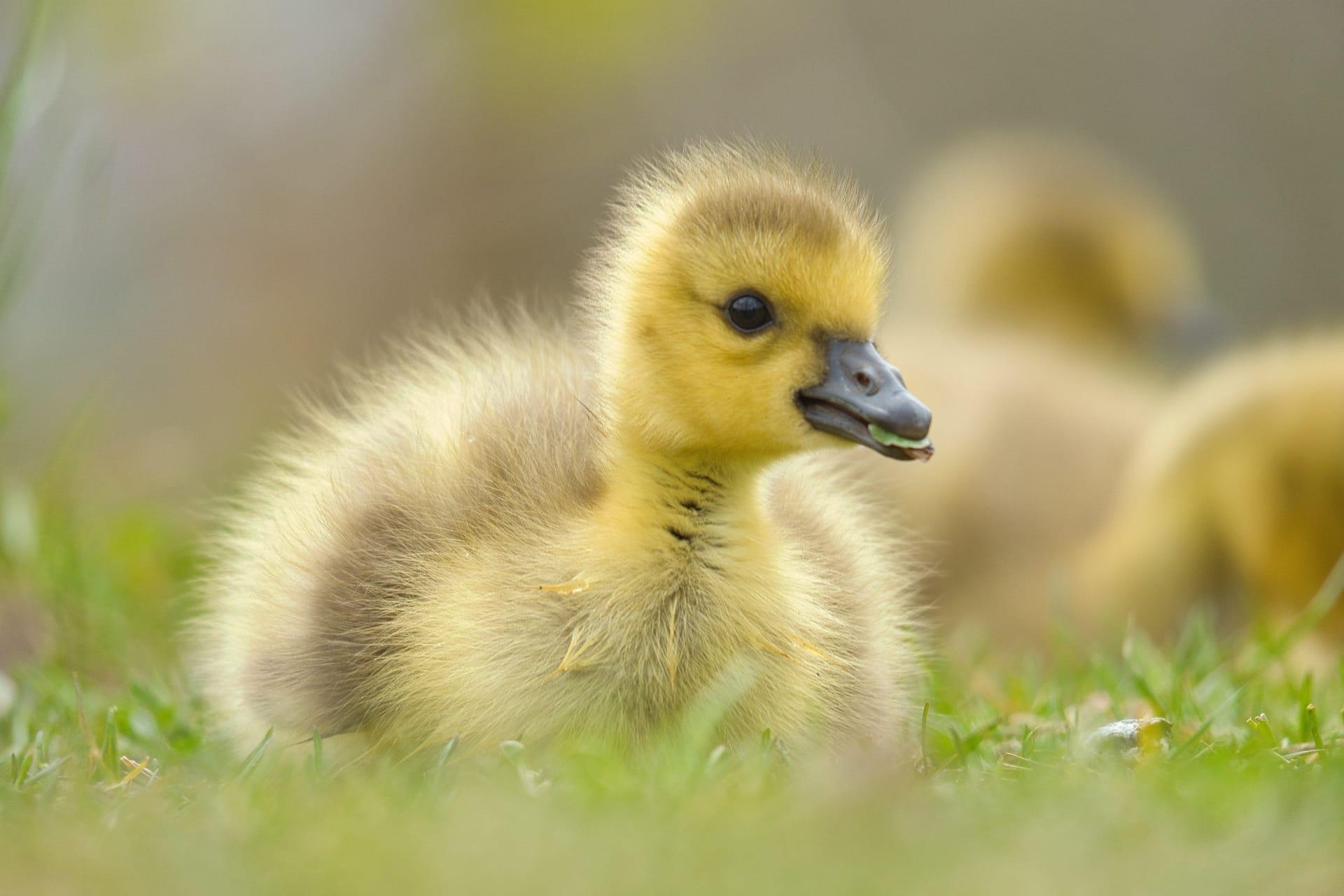1
Ducks are known for their waterproof feathers, but the real magic lies in a special oil they produce. This oil, secreted from a gland near their tails, is meticulously spread over their feathers as they preen. The oil keeps their feathers waterproof and buoyant. In fact, a duck's feathers are so waterproof that even when diving underwater, their underlayer remains completely dry. This adaptation is vital for their survival, as it prevents the ducks from getting waterlogged and helps maintain body heat in cold waters.
Ducks have highly flexible necks, and some species can even turn their heads 180 degrees! This isn't just a quirky party trick; it's crucial for their survival. The flexible neck aids in preening, allowing them to reach every feather with their beaks to apply the waterproofing oil. It also plays a vital role in their feeding habits, especially for those species that feed on the bottom of ponds or lakes. They can stretch their necks to reach food in deeper waters, making them efficient feeders.

2
Quacking isn't the only sound in a duck's vocal repertoire. In fact, they can make a wide range of sounds including whistles, coos, grunts, and even growls. Each sound has a specific meaning, varying from mating calls to alarm signals. For example, the famous 'quack' is typically a female mallard's call, often used to gather her ducklings or signal distress. Male ducks, on the other hand, are generally quieter and have softer, raspy calls.
Ducks are not just at home in the water; they are also excellent flyers, capable of long migratory journeys. Some species, like the Northern Pintail, can travel thousands of kilometers during migration. Their powerful flight muscles and aerodynamic body shapes enable them to reach speeds of up to 60 miles per hour! This swift flying ability is critical during migration and helps them escape predators.

3
Did you know that ducks have a unique feeding strategy called 'dabbling'? Unlike diving ducks that submerge completely, dabbling ducks feed on the water's surface or tip forward to graze underwater plants, while their tails stick up in the air. This method allows them to access a diverse range of food sources, from aquatic plants to small fish and insects. Dabbling is most commonly seen in species like the Mallard and the American Black Duck.
Ducks have incredible vision. They have a field of view of nearly 340 degrees, thanks to their eyes being located on the sides of their heads. This panoramic view allows them to see predators from almost all angles. Moreover, ducks have three eyelids and can see in color, thanks to their retinas being rich in cones. Their excellent vision is crucial for spotting food and avoiding danger, both in the air and underwater.

4
Ducks play a vital role in the ecosystem as natural pest controllers. Their diet includes various insects, snails, and slugs, which are common garden pests. By feeding on these creatures, ducks help control their populations, aiding in the natural balance of the ecosystem. This makes them beneficial to farmers and gardeners, as they reduce the need for chemical pesticides.
While most birds have hollow bones to aid in flight, ducks have denser bones that help in diving and staying submerged. This adaptation is particularly useful for diving ducks, who need to dive deep underwater to feed on aquatic plants and animals. The denser bones add weight and reduce buoyancy, making it easier for them to dive and stay under the water for longer periods.

5
Ducks have a unique social structure. They are often seen in large groups, known as 'flocks' or 'rafts', especially during migration or in communal feeding areas. These groups provide safety in numbers, as more eyes can spot potential predators. The social structure also plays a role in mating, with males often displaying elaborate courtship behaviors to attract females.
The color of a duck's bill can indicate its health status. A bright-colored bill is often a sign of a healthy duck. Ducks use their bills to forage for food, preen feathers, and interact with other ducks. The bill's color can change based on the duck's diet, age, and overall health. A healthy diet rich in carotenoids, which are found in aquatic plants and certain invertebrates, can lead to a more vibrant bill color.